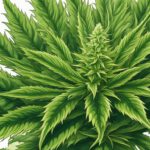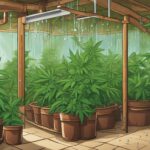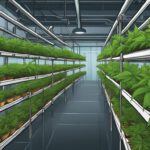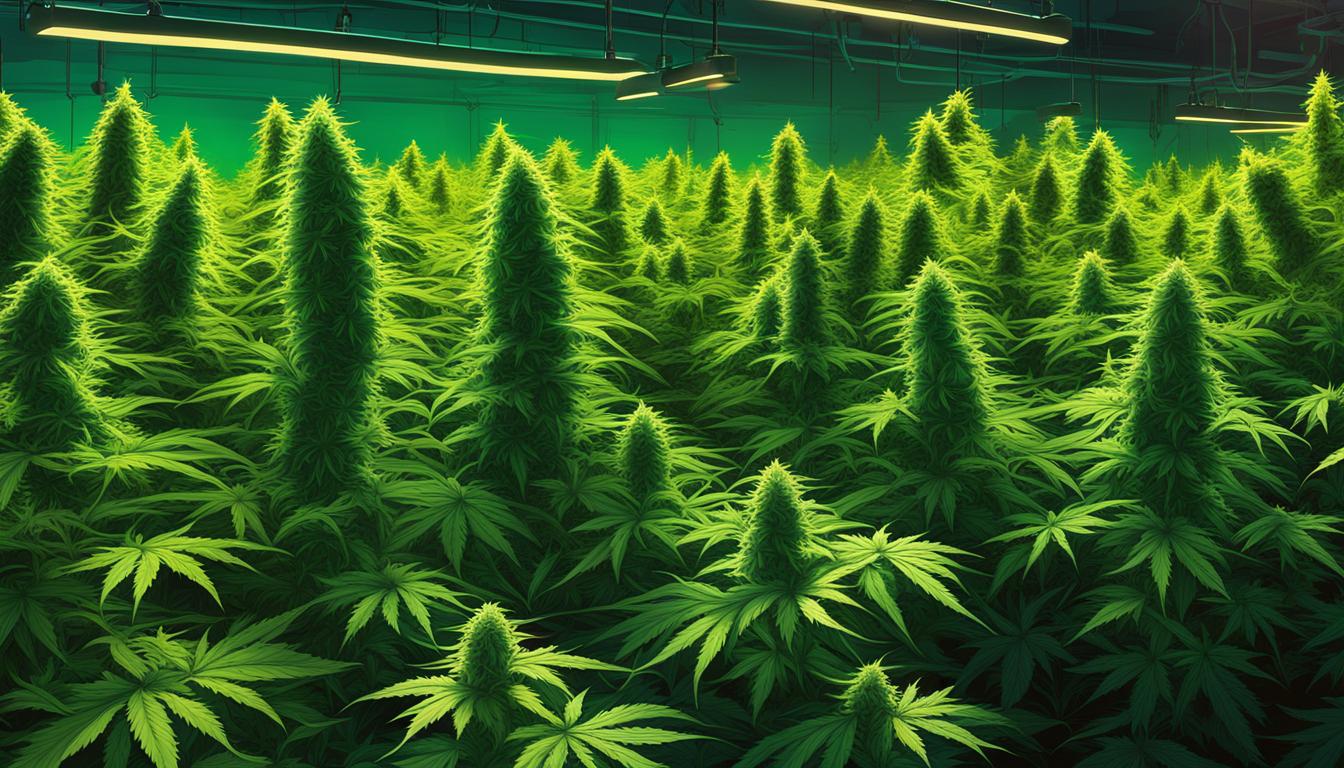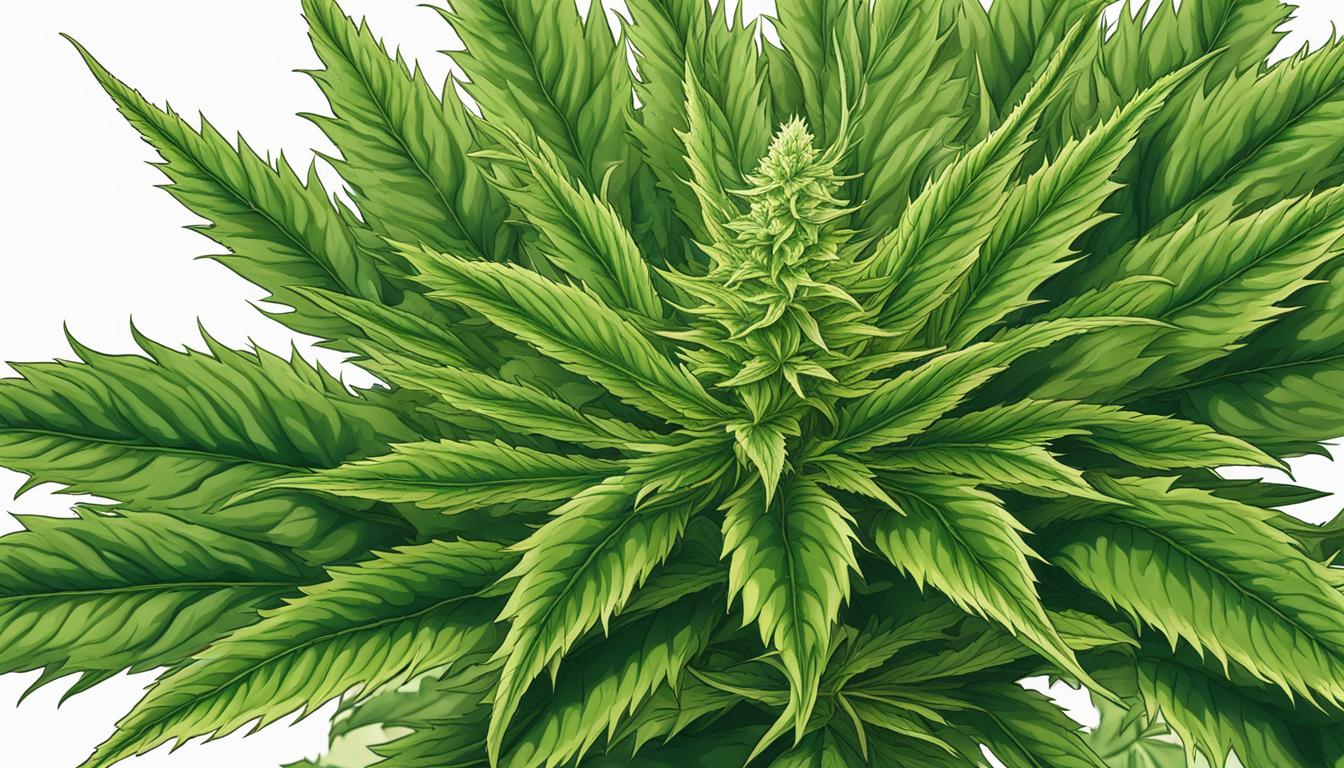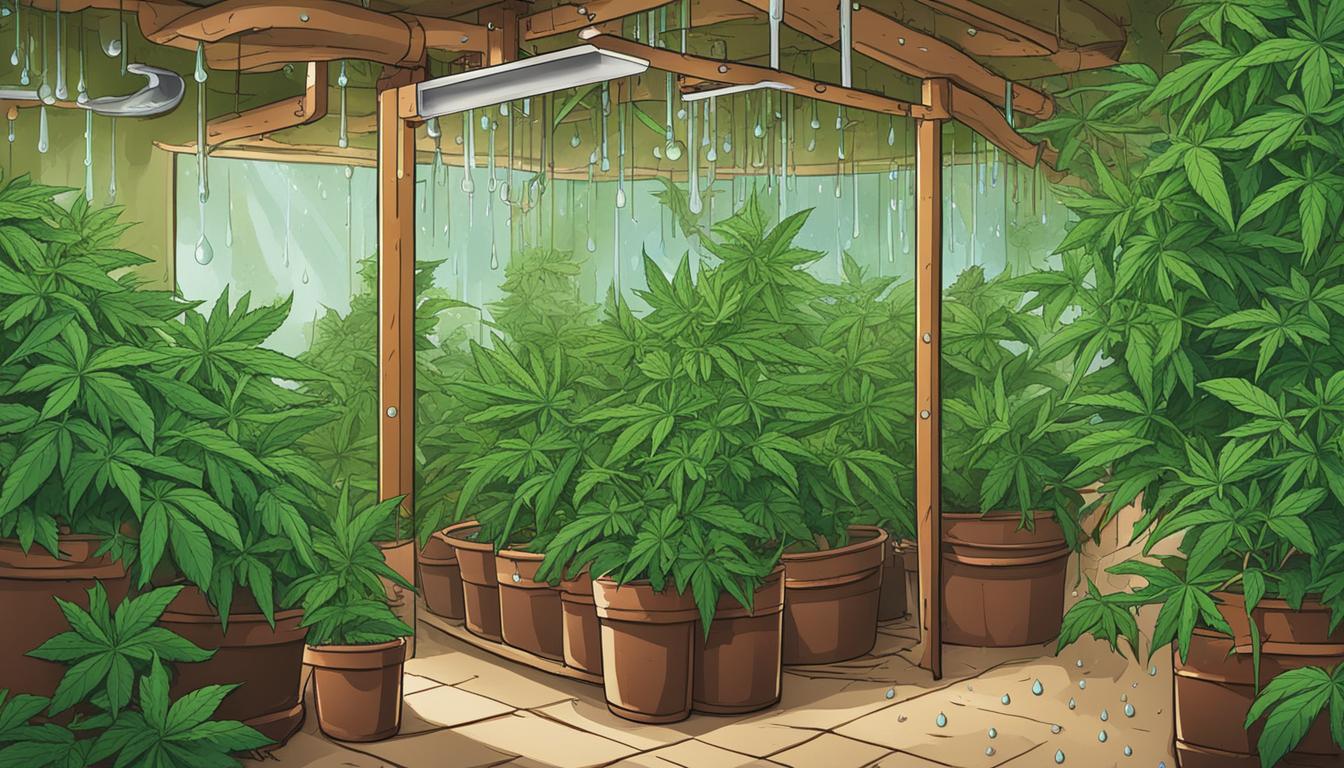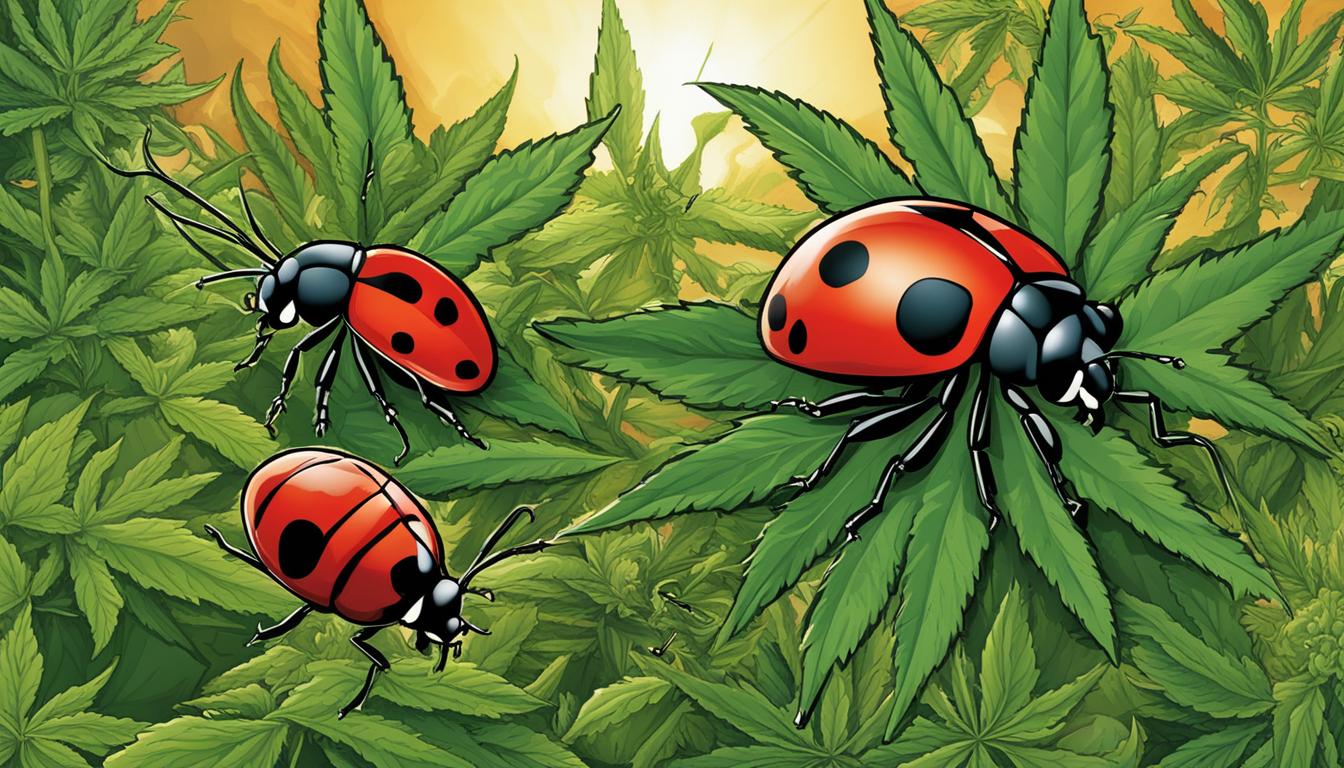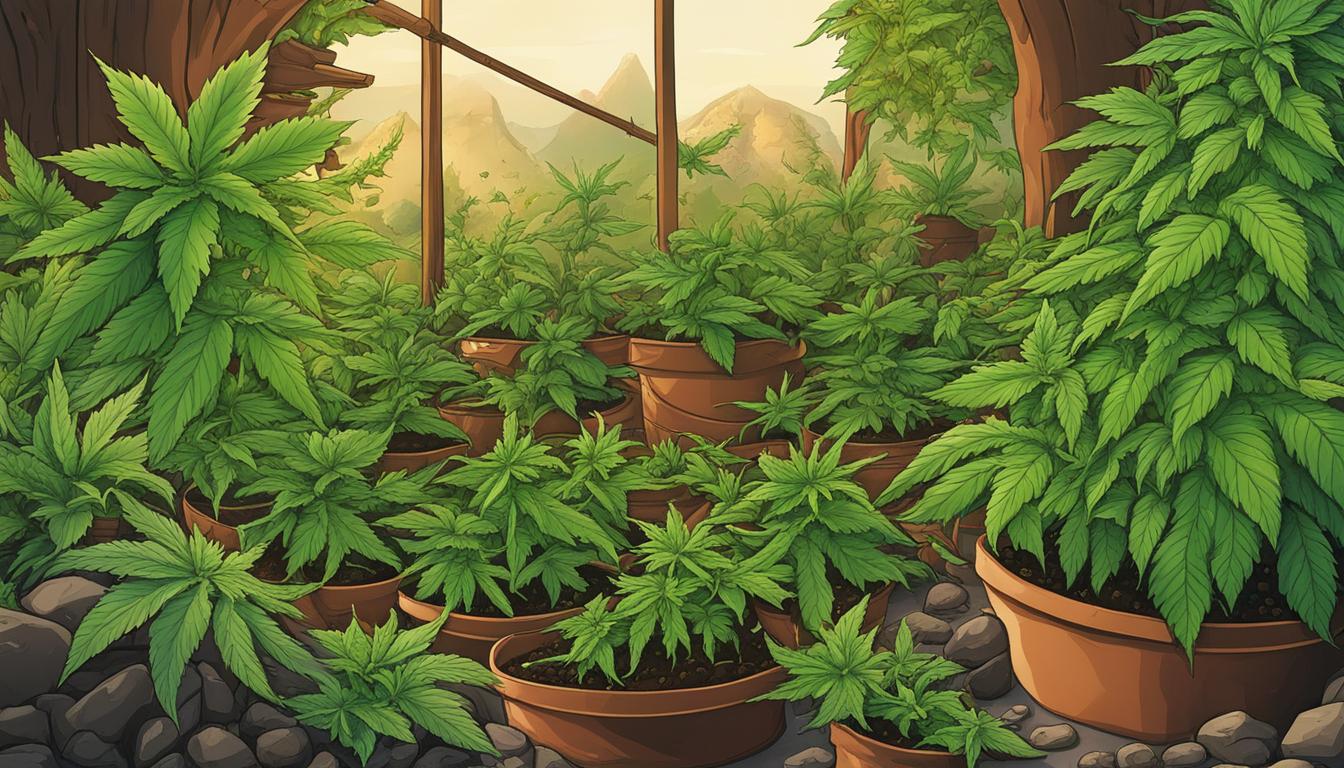If you’re a cannabis cultivator, you know that lighting is critical to the success of your plants. Providing the right lighting conditions is fundamental to fostering healthy growth, strong yields, and potent bud. Understanding the importance of proper lighting in cannabis cultivation is a crucial step towards achieving the best results.
Lighting can affect everything from the photosynthesis process to the flowering stage, and different types of lighting can provide different benefits and drawbacks. By learning about the role lighting plays in your plants’ lives, you can make informed decisions about lighting options and techniques that will suit your grow space and your plants’ needs best.
If you’re new to cannabis cultivation or looking to refine your skills, this article will provide you with valuable insights into the importance of proper lighting and effective lighting tips for optimum plant growth and yields.
Key Takeaways
- Proper lighting is essential for cannabis cultivation, and it significantly impacts plant health and yield.
- Optimal lighting for cannabis plants improves photosynthesis, nutrient uptake, and ultimately leads to higher harvest yields.
- Choosing the right lighting for cannabis cultivation involves various factors, including light intensity, spectrum, and coverage area.
- The light spectrum plays a crucial role in cannabis cultivation and can affect plant development and growth stages.
- Maximizing cannabis yields with proper lighting requires implementing effective lighting techniques, including light schedule adjustments, light intensity control, and supplemental lighting.
Understanding the Benefits of Proper Lighting in Growing Cannabis
When it comes to cultivating cannabis, providing optimal lighting conditions is essential for achieving healthy growth and high yields. Proper lighting can help your plants in numerous ways, from stimulating photosynthesis to enhancing nutrient uptake and regulating flowering. Here are some of the key benefits of using optimal lighting for cannabis plants:
Improved Growth: With the right spectrum and intensity of light, your cannabis plants can achieve optimal growth, leading to higher yields and better quality buds. Proper lighting can also help reduce the risk of nutrient deficiencies and plant diseases, as well as improve overall plant health.
Maintaining Consistency: Consistent and adequate lighting can help regulate plant growth and development, ensuring that each stage of the plant’s life cycle progresses smoothly. By maintaining a regular lighting schedule, you can help your plants establish a healthy circadian rhythm, leading to faster, more robust growth.
Increased Yield: Providing optimal lighting can help increase your cannabis yield significantly. With the right lighting, you can ensure that each plant gets the right amount of light to promote bud development and achieve maximum potency and quality.
Better Flavor and Aroma: Proper lighting can also enhance the flavor and aroma of your cannabis buds. By using the right spectrum of light, you can stimulate the production of terpenes, which are responsible for the unique scent and flavor of each strain.
Energy Efficiency: Choosing energy-efficient lighting options, such as LED grow lights, can help you save on electricity bills and reduce your carbon footprint. LED lights are more efficient than traditional lighting options, such as HPS or fluorescent lights, and emit less heat, reducing the need for additional cooling systems.
By understanding the benefits of proper lighting for cannabis cultivation, you can make informed decisions about which lighting options to choose, based on your specific needs and goals. In the next section, we will discuss the different types of grow lights available and how to choose the best option for your cannabis plants.
Optimal Lighting for Cannabis Plants: Tips and Best Practices
Before looking at the different types of grow lights, it’s important to understand some essential lighting tips and best practices for growing cannabis.
- Ensure that your plants get at least 18 hours of light per day during the vegetative stage and 12 hours of light per day during the flowering stage.
- Position your grow lights at the right distance from your plants, based on the type of light and the stage of the plant’s growth.
- Choose grow lights that emit the right spectrum of light, including blue light for vegetative growth and red light for flowering.
- Use reflective surfaces, such as Mylar or white paint, to maximize light reflection and distribution in your grow room.
- Consider using supplemental lighting options, such as LED light bars or T5 fluorescent lights, to provide additional light to the lower parts of your plants.
By following these tips and integrating the right lighting options, you can ensure that your cannabis plants get the optimal lighting conditions they need to thrive. In the next section, we will discuss how to choose the right lighting options for your cannabis cultivation needs.
Choosing the Right Lighting for Cannabis Cultivation
When it comes to growing cannabis, choosing the right lighting is essential to ensure optimal plant health and yield. With so many options available, it can be overwhelming to determine which grow lights are best suited for your cultivation needs. In this section, we’ll provide you with some tips to help you choose the right lighting for your cannabis plants.
Consider the Type of Grow Light
There are several types of grow lights available in the market, including LED, High-Pressure Sodium (HPS), and fluorescent. LED lights are preferred for indoor cultivation due to their energy efficiency and long lifespan. HPS lights produce high levels of intensity, making them ideal for large-scale commercial growers. Fluorescent lights are suitable for small-scale growers or those with limited space.
Take into Account Light Intensity and Coverage Area
The intensity and coverage area of your grow lights can significantly impact your plant’s growth. Light intensity is measured in lumens and PAR (Photosynthetically Active Radiation). It’s essential to ensure that your grow lights provide enough intensity to cover your entire growing area. Coverage area is the area that your grow lights can effectively cover. Always refer to the manufacturer’s specifications to select the right coverage area for your grow lights.
| Type of Grow Light | Intensity (lumens) | PAR | Coverage Area |
|---|---|---|---|
| LED | Full spectrum 3000-8000 lumens | 150-600 mol/s | 1.5′ x 1.5′ – 2.5′ x 2.5′ |
| HPS | 55,000 lumens | 500-1100 mol/s | 4′ x 4′ – 5′ x 5′ |
| Fluorescent | 500-15000 lumens | 30-200 mol/s | 1′ x 1′ – 2′ x 2′ |
Opt for Full Spectrum Lighting
Full spectrum grow lights provide all wavelengths of light, including red, blue, and green, that are essential for plant growth. They mimic natural sunlight to ensure healthy growth and greater yield. If you opt for LED grow lights, ensure that they provide a full spectrum of light.
Factor in the Cost of Electricity
Grow lights consume a significant amount of electricity, and it’s essential to factor in the cost of electricity when selecting your grow lights. LED grow lights are more energy-efficient and consume less electricity than HPS and fluorescent lights. Though LED lights may be more expensive initially, the long-term energy savings make them a cost-effective option.
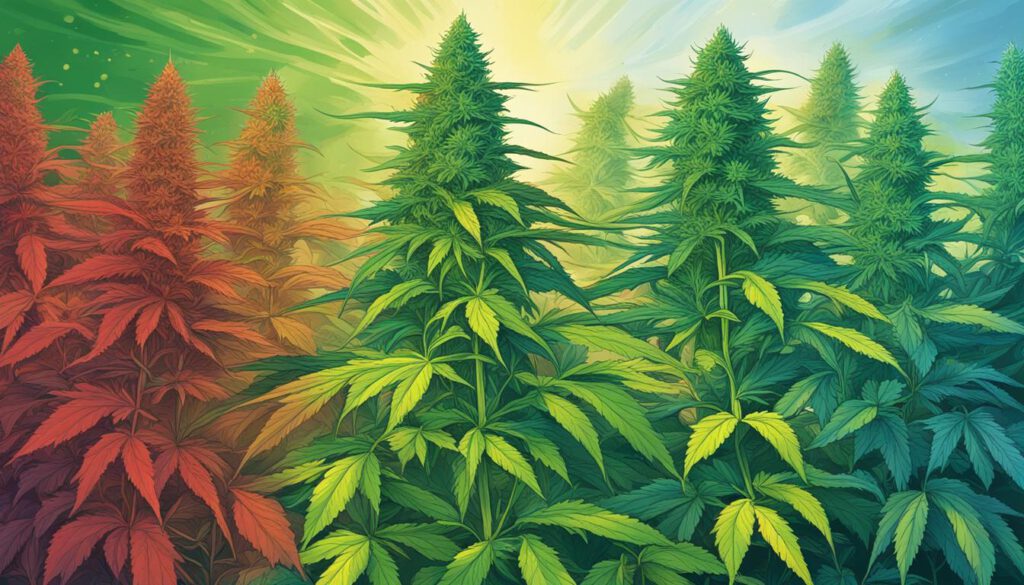
Optimizing light spectrum and implementing effective lighting techniques in cannabis cultivation can result in higher yields, healthier plants, and reduced energy costs. Understanding the importance of light spectrum and how it affects plant growth is crucial for any cannabis grower looking to enhance the quality and quantity of their harvests.
Maximizing Cannabis Yields with Proper Lighting
When it comes to indoor cannabis cultivation, choosing the best lighting is crucial for maximizing your yields. With the right lighting, you can create optimal growing conditions, promote plant health, and boost productivity. Here are some tips for choosing and utilizing the best lighting for indoor cannabis cultivation:
Adjusting Light Schedule
One of the most critical factors in maximizing yields is adjusting the light schedule for your cannabis plants. During the vegetative stage, aim for 18 hours of light and 6 hours of darkness each day. During the flowering stage, decrease the light exposure to 12 hours of light and 12 hours of darkness. This light cycle mimics natural sunlight and encourages the plants to produce more buds.
Controlling Light Intensity
Controlling light intensity is another crucial aspect of optimizing indoor cannabis production. Ensure that your grow lights provide the right amount of lumens for your specific stage of growth. For the vegetative stage, aim for 15-30 watts per square foot of growing space. For the flowering stage, increase to 30-60 watts per square foot of space. Using a digital light meter can help you accurately measure the light intensity.
Supplemental Lighting Techniques
In addition to traditional grow lights, you can also use supplemental lighting techniques to maximize your yields. One popular method is to use LED strips to add light to underexposed areas of the plant. This approach can increase bud production and improve overall yield. Another effective technique is the use of High-Intensity Discharge (HID) lamps to supplement your grow lights’ output during the flowering stage. This technique can help achieve higher yields by providing the necessary light intensity for optimum bud growth.
Table: Comparison of Common Grow Light Types
| Grow Light Type | Pros | Cons |
|---|---|---|
| LED | Energy-efficient, long lifespan, adjustable spectrum options | Expensive initial investment, may not penetrate dense foliage |
| High-Pressure Sodium (HPS) | High light intensity, good for flowering stage | Can run hot, short lifespan, not energy-efficient |
| Fluorescent | Low heat output, affordable, good for vegetative stage | Less light intensity than other types, may require frequent replacement |
By understanding the importance of lighting and utilizing these tips and techniques, you can maximize your indoor cannabis yields and improve your harvest. Remember to adjust your light schedule, control light intensity, and utilize supplemental lighting to create the optimal growing conditions for your plants.
Conclusion
By now, you understand that providing proper lighting is crucial to ensuring successful cannabis cultivation. With the right lighting conditions, you can optimize plant growth, nutrient uptake, and ultimately maximize your yields.
Taking Action
If you’re ready to take action, start by selecting the right grow lights for your cannabis plants. Consider the light intensity and coverage area, as well as the spectrum of the light. Think about the growth stage of your plants and adjust the light schedule accordingly.
Optimizing Your Lighting Techniques
Optimizing your lighting techniques is also essential to achieving the best results. Look into different lighting techniques, such as light cycles, light distance, and supplemental lighting, to further enhance plant growth. Regularly monitor your plants and adjust the lighting as needed to ensure optimal growth.
Remember that providing proper lighting is not just a one-time effort. It requires ongoing attention and adjustments to ensure your cannabis plants continue to thrive. But with the right knowledge and techniques, you can unlock the full potential of your cannabis cultivation journey and reap the benefits of healthy, high-yielding plants.
FAQ
What is the importance of proper lighting in cannabis cultivation?
Proper lighting is crucial for the successful cultivation of cannabis plants. It directly affects plant health and yield, influencing factors such as growth, nutrient uptake, and overall development.
What are the benefits of providing cannabis plants with proper lighting conditions?
Optimal lighting conditions contribute to improved plant development, enhanced nutrient absorption, and higher harvest yields. It ensures that cannabis plants receive the light they need to thrive and reach their full potential.
How do I choose the right lighting for cannabis cultivation?
When selecting grow lights for cannabis cultivation, consider factors such as light intensity, spectrum, and coverage area. LED, HPS, and fluorescent lights are common options to explore, each with their advantages and considerations.
What is the importance of light spectrum in cannabis cultivation?
Light spectrum plays a significant role in cannabis cultivation as different wavelengths of light have specific effects on plant growth stages. Understanding light spectrum and implementing appropriate lighting techniques, such as light cycles and distance, can optimize plant development.
How can I maximize cannabis yields with proper lighting?
To maximize cannabis yields, it is essential to choose the best lighting practices for indoor cultivation. This includes adjusting light schedules, controlling light intensity, and utilizing supplemental lighting techniques to ensure the plants receive the ideal light conditions for optimal growth.

